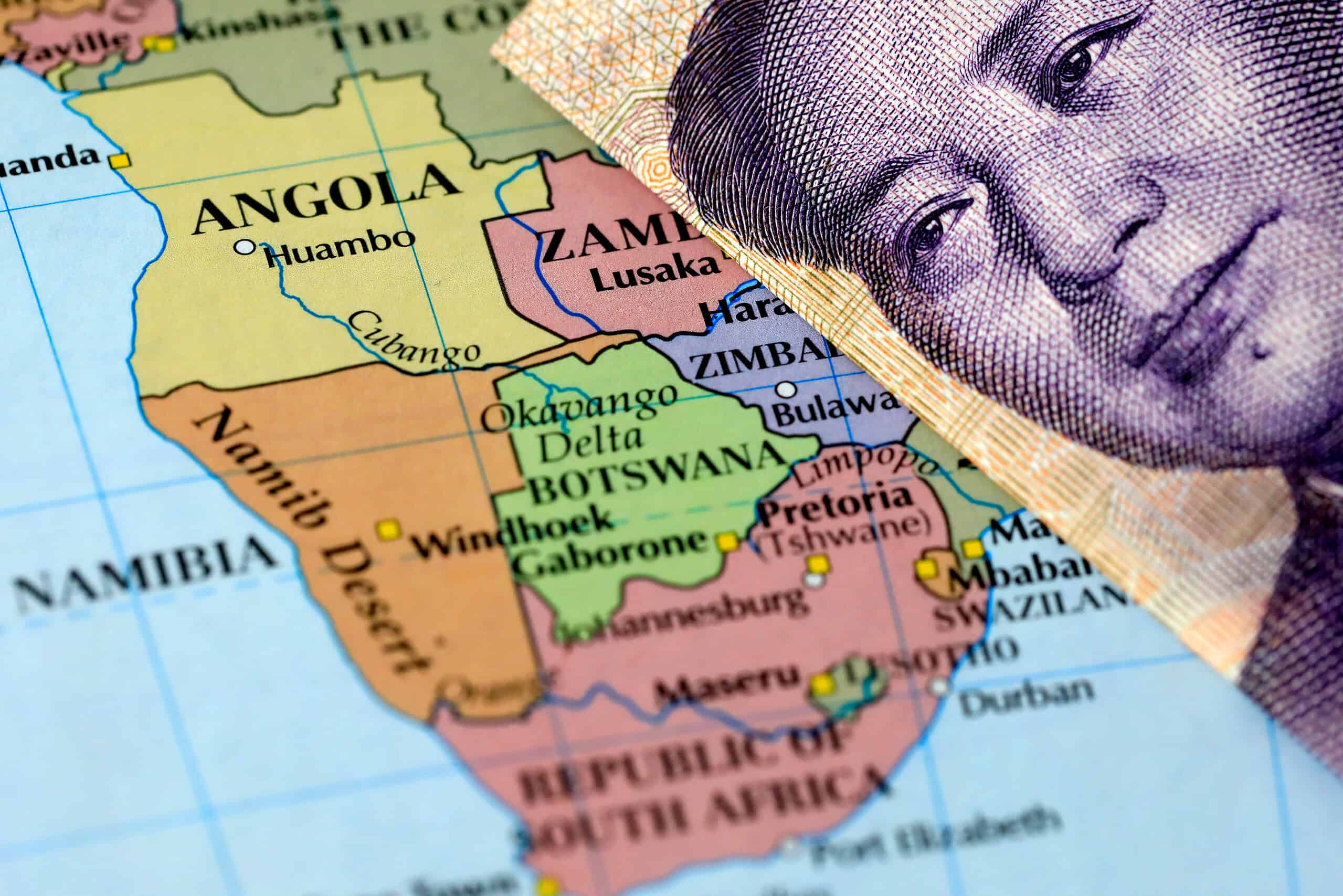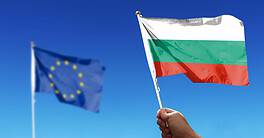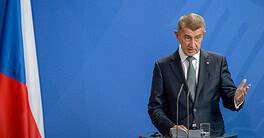China continues to dominate trade with the continent. But overlending—and US initiatives to extend its security and investment footprint—are challenging its position.
China solidified its position as Africa’s largest bilateral trading partner last year, as trade with the continent reached a record $282.1 billion, up 1.5% from 2022. But a 7.5% surge in Chinese exports, to $173 billion, was not matched by imports from Africa, which fell by 6.7% to $109 billion, widening Africa’s trade deficit with China to $64 billion from $46.9 billion in 2022, according to China’s Ministry of Commerce.
African nations’ rising debt to China began raising sustainability concerns early in the last decade as more of them turned to the Eastern colossus to finance critical infrastructure projects. By 2023, several African countries had accumulated significant debt to Beijing, primarily on infrastructure and development initiatives.
Angola now owes China approximately $20 billion, mostly on energy and transportation projects. Ethiopia’s debt to China stands at around $13.5 billion, supporting projects like railways and industrial parks. Kenya, another major borrower, owes an estimated $9.8 billion, which it has used to fund projects including the Standard Gauge Railway (SGR) and road construction. Zambia’s debt to China is about $6.5 billion, focused on infrastructure and mining.
Beijing, accordingly, has become more cautious over the past decade, notes Jeremy Stevens, Asia economist at Standard Bank Group in Beijing.

Covid-19 pandemic, Chinese lending was
slowing down.
“Even before the Covid-19 pandemic, Chinese lending was slowing down, a trend consistently reflected in the objectives set at FOCAC meetings since 2016,” he says. The Forum on China-Africa Cooperation (FOCAC), a key platform for Africa-China relations since 2000, held its ninth summit in Beijing last month amid rising geopolitical tensions, with China focusing on its position relative to other global powers, notably the US.
American policy toward Africa has long been driven by security concerns, especially since the 9/11 terror attacks in 2001, which reshaped alliances across the continent. Washington maintains a strong security presence, including a permanent base in Djibouti and several facilities in East and West Africa and the Sahel, focusing on counterterrorism, notes Peter Stein, CEO of Stein Brothers AB, Sweden.
“Unlike China’s broad agendas, US policy has traditionally relied on targeted programs,” he says. In recent years, however, as Cold War-like dynamics reemerge, US strategy for sub-Saharan Africa has become more comprehensive. The continent’s geopolitical significance is rising, driven by a booming population, critical mineral resources for the green energy transition, and a growing role in multilateral institutions.
“The geopolitical relevance of the continent is set to increase dramatically,” says Stein.
Accordingly, China’s involvement in Africa goes beyond trade, encompassing a mix of economic investments, geopolitical strategies, and local challenges. The Belt and Road Initiative (BRI), which China launched in 2013 to foster global connectivity and trade routes, assigns Africa a pivotal role within its system of maritime and land corridors.
By 2023, Beijing’s cumulative investments in Africa surpassed $300 billion, primarily in telecommunications, energy, and transportation, according to the China Africa Research Initiative at Johns Hopkins University.
“In recent years, Chinese infrastructure loans have boosted growth in recipient countries,” says Lucas Engel, data analyst at the Global China Initiative, Boston University. “Chinese-financed projects have had positive spillover effects on broader economic activity in Africa, something not as evident with World Bank loans.”
Deepening Relationships
Kenya has emerged as a regional hub benefiting from significant Chinese investment, notably in infrastructure projects like the SGR. Ethiopia has also embraced Chinese interest, particularly in infrastructure and the financial sector, where Chinese banks have partnered with local institutions.
Djibouti, strategically located in the Horn of Africa, hosts China’s first overseas military base alongside the tiny nation’s US Navy station, symbolizing China’s expanding naval presence and strategic interest in securing access to African markets. Tanzania, on the other hand, has taken a balanced approach to Chinese investments, notably with the Bagamoyo Port project, reflecting bilateral cooperation to enhance trade capacities.
“They have also invested in real estate, purchasing property and establishing small ‘Chinatowns’ to cater to the growing Chinese expatriate community involved in ongoing projects,” Msita says, in addition to major infrastructure projects like the SGR and the Julius Nyerere Hydropower Station.

relevance is set to increase dramatically.
Debt Troubles
All this, combined with growing imports of Chinese goods ranging from electronics to machinery, has made China Tanzania’s largest trading partner. The East African nation, in turn, exports agricultural products like cashew nuts and minerals to China. Trade between Tanzania and the US, while significant, is less diversified, focusing mainly on agricultural exports under the African Growth and Opportunity Act.
Several African countries have faced significant challenges in servicing their Chinese loans, with some defaulting or at risk of default. Zambia became the first African country to default on its sovereign debt in 2020, during the Covid-19 pandemic, as it struggled with approximately $6.6 billion owed to Beijing. Similarly, the Republic of Congo faced difficulties in 2019 when it owed around $2.5 billion, leading to debt restructuring negotiations.
In 2021, Angola, with about $20 billion in debt to China, was at risk of default as it struggled with low oil prices and the pandemic. Djibouti, in 2018, risked default on $1.4 billion in Chinese debt, accounting for over 70% of its GDP. More recently, in 2023, Kenya, with approximately $9.8 billion in Chinese debt, faced challenges repaying loans, particularly those related to the SGR, raising concerns about potential default.
In response to China’s rise in Africa, and perhaps to take advantage of its difficulty maintaining some of its lending programs, the US has recalibrated its engagement with the continent. Strategies have included deals like the US-Kenya Free Trade Agreement, signed in 2020 and aimed at establishing a free-trade area and setting standards for future US-Africa trade relations.
The Prosper Africa initiative, launched in 2019, aims to double two-way trade and investment between the US and Africa, leveraging private-sector engagement and facilitating market access. The US International Development Finance Corporation, established in 2019, now plays a pivotal role in financing projects across Africa, focusing on infrastructure, energy, and health care.
Chinese investment in Tanzania extends beyond infrastructure, notes Masele Msita, senior manager of Strategic Partnerships and Alliances at CRDB Bank, Tanzania, extending into the retail sector with supermarkets and stores selling Chinese goods becoming increasingly common.
Additionally, the US has promoted the Build Back Better World initiative, launched in 2021, to mobilize investments for sustainable infrastructure development in Africa, emphasizing transparency and high standards as alternatives to the BRI. Security cooperation, led by the US Africa Command (AFRICOM), remains a key component of US policy, focused on enhancing military partnerships and countering security threats in regions like the Sahel and the Horn of Africa.
None of this means that China’s engagement and investment in the continent will fade.
“Dwindling Chinese loan amounts in recent years may give the impression that economic ties are weakening, but this is misleading,” says Lucas Engel. “Chinese lenders are still disbursing funds from existing loans and African borrowers are servicing existing debts. However, the rise in interest rates globally has heightened concerns about debt servicing in Africa.”




